Automotive Technology
7th Edition
ISBN: 9781337794213
Author: ERJAVEC, Jack.
Publisher: Cengage,
expand_more
expand_more
format_list_bulleted
Concept explainers
Textbook Question
Chapter 14, Problem 5ASRQ
Technician A says that if the PCV valve or connecting hoses become clogged, excessive pressure will develop in the crankcase and can cause oil leaks. Technician B says that if the PCV valve or connecting hoses become clogged, oil may be pushed into the air cleaner or cause it to be drawn into the intake manifold. Who is correct?
- Technician A
Expert Solution & Answer
Trending nowThis is a popular solution!

Students have asked these similar questions
5.112 A mounting bracket for electronic components is formed from sheet
metal with a uniform thickness. Locate the center of gravity of the
bracket.
0.75 in.
3 in.
༧
Fig. P5.112
1.25 in.
0.75 in.
y
r = 0.625 in.
2.5 in.
1 in.
6 in.
x
4-105. Replace the force system acting on the beam by an equivalent resultant force and couple
moment at point B.
A
30 in.
4 in.
12 in.
16 in.
B
30%
3 in.
10 in.
250 lb
260 lb
13
5
12
300 lb
Sketch and Describe a hatch coaming and show how the hatch coamings are framed in to ships strucure?
Chapter 14 Solutions
Automotive Technology
Ch. 14 - What is the most efficient way to increase a...Ch. 14 - Explain why a pressure relief valve is needed in...Ch. 14 - List five problems that can be caused by engine...Ch. 14 - Describe the procedure for using air bleed valves...Ch. 14 - Describe the simple test used to determine whether...Ch. 14 - True or False? The presence of air in the cooling...Ch. 14 - True or False? Oil pressure is determined by...Ch. 14 - True or False? To eliminate the drain of engine...Ch. 14 - Which of the following is a function of the...Ch. 14 - For every pound of pressure put on engine coolant,...
Ch. 14 - Which is not a typical method of driving the water...Ch. 14 - Which of the following is not an effective way to...Ch. 14 - Cooling system hoses should be replaced when they...Ch. 14 - Which of the following is not a true statement...Ch. 14 - An engine overheats in traffic but is fine when...Ch. 14 - Technician A says that excessive engine oil...Ch. 14 - While checking for conditions that might cause...Ch. 14 - When discussing oil consumption: Technician A says...Ch. 14 - Technician A says that if the PCV valve or...Ch. 14 - While bleeding air from a cooling system:...Ch. 14 - While diagnosing an engine that overheats after...Ch. 14 - While performing a cooling system service on a...Ch. 14 - While discussing the causes of extreme engine...Ch. 14 - While diagnosing the cause of air bubbles in the...
Knowledge Booster
Learn more about
Need a deep-dive on the concept behind this application? Look no further. Learn more about this topic, mechanical-engineering and related others by exploring similar questions and additional content below.Similar questions
- Sketch and describe hatch coamings. Describe structrual requirements to deck plating to compensate discontinuity for corners of a hatch. Show what is done to the deck plating when the decks are cut away and include the supporting members.arrow_forwardAn Inclining experiment done on a ship thats 6500 t, a mass of 30t was moved 6.0 m transvesly causing a 30 cm deflection in a 6m pendulum, calculate the transverse meta centre height.arrow_forwarda ship 150 m long and 20.5 m beam floats at a draught of8 m and displaces 19 500 tonne. The TPC is 26.5 and midshipsection area coefficient 0.94. Calculate the block, prismatic andwaterplane area coefficients.arrow_forward
- A vessel loads 680 t fuel between forward and aft deep tanks. centre of gravity of forward tank is 24m forward of ships COG. centre to centre between tanks is 42 m. how much in each tank to keep trim the samearrow_forwardBeam of a vessel is 11% its length. Cw =0.72. When floating in SW of relative denisity 1.03, TPC is 0.35t greater than in freshwater. Find the length of the shiparrow_forwardAn inclining experiment was carried out on a ship of 4000tonne displacement, when masses of 6 tonne were moved transverselythrough 13.5 m. The deflections of a 7.5 m pendulurnwere 81, 78, 85, 83, 79, 82, 84 and 80 mm respectively.Caiculate the metacentric height.arrow_forward
- A ship of 10 000 tonne displacement has a waterplanearea of 1300 m2. The ship loads in water of 1.010 t/m3 andmoves into water of 1.026 t/m3. Find the change in meandraughtarrow_forwardA ship of 7000 tonne displacement has a waterplane areaof 1500 m2. In passing from sea water into river water of1005 kg/m3 there is an increase in draught of 10 cm. Find the Idensity of the sea water.arrow_forwardA ship has 300 tonne of cargo in the hold, 24 m forward ofmidships. The displacement of the vessel is 6000 tonne and its centre of gravity is 1.2 m forward of midships.Find the new position of the centre of gravity if this cargo ismoved to an after hold, 40 m from midshipsarrow_forward
- Sketch and describe how ships are supported in dry dock. When and where does the greatest amount of stresses occur?arrow_forwardSketch and desribe a balanced rudder and how it is suspendedarrow_forwardA ship 140 m long and 18 m beam floats at a draught of9 m. The immersed cross-sectionai areas at equai intervais are 5,60, 116, 145, 152, 153, 153, 151, 142, 85 and 0 m2 respectively.Calculate:(a) displacement(b) block coefficient(c) midship section area coefficient(d) prismatic coefficient.arrow_forward
arrow_back_ios
SEE MORE QUESTIONS
arrow_forward_ios
Recommended textbooks for you
 Automotive Technology: A Systems Approach (MindTa...Mechanical EngineeringISBN:9781133612315Author:Jack Erjavec, Rob ThompsonPublisher:Cengage Learning
Automotive Technology: A Systems Approach (MindTa...Mechanical EngineeringISBN:9781133612315Author:Jack Erjavec, Rob ThompsonPublisher:Cengage Learning Automotive TechnologyMechanical EngineeringISBN:9781337794213Author:ERJAVEC, Jack.Publisher:Cengage,
Automotive TechnologyMechanical EngineeringISBN:9781337794213Author:ERJAVEC, Jack.Publisher:Cengage,

Automotive Technology: A Systems Approach (MindTa...
Mechanical Engineering
ISBN:9781133612315
Author:Jack Erjavec, Rob Thompson
Publisher:Cengage Learning

Automotive Technology
Mechanical Engineering
ISBN:9781337794213
Author:ERJAVEC, Jack.
Publisher:Cengage,
Fire Safety; Author: Toronto Metropolitan University;https://www.youtube.com/watch?v=7jCyJIJllHE;License: Standard Youtube License